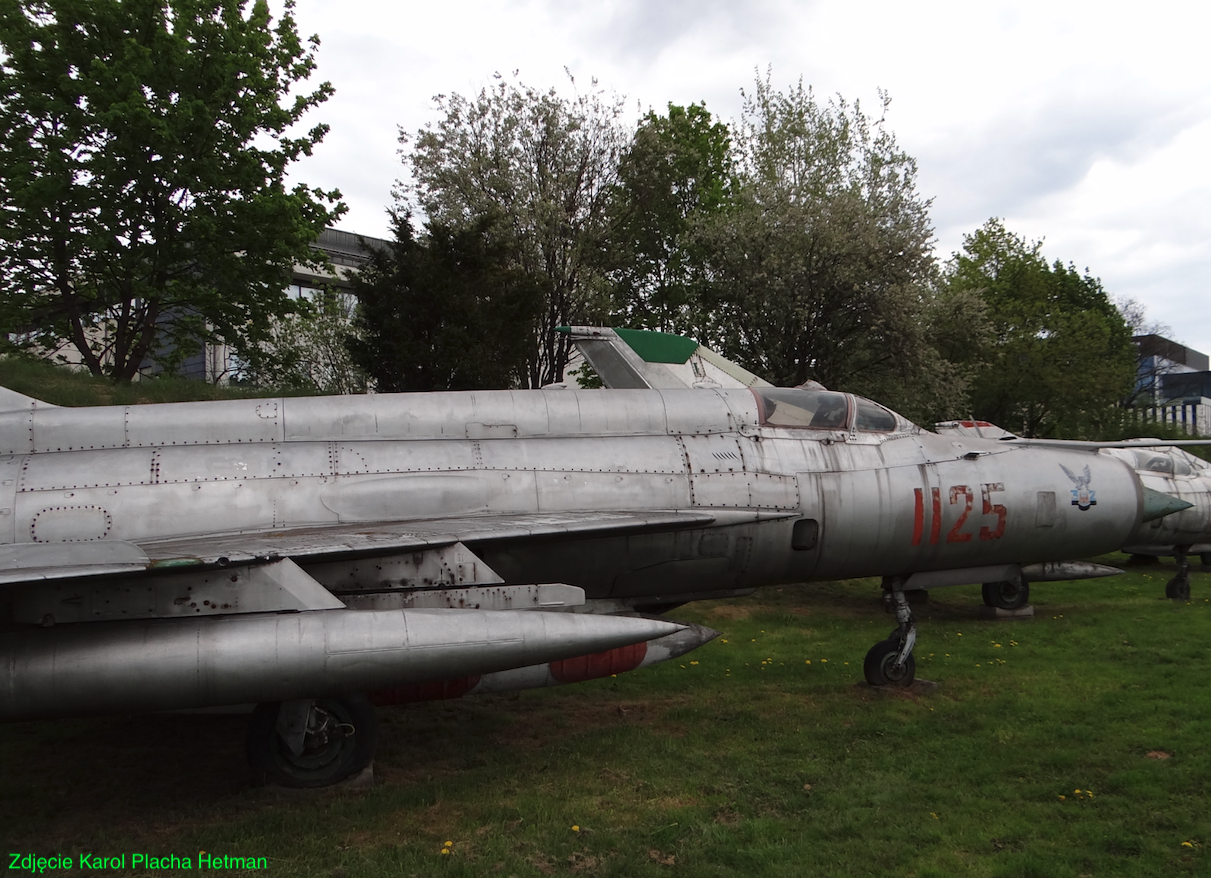Straszewy 2013-12-12
MiG-21 R nb 1911 plane crash.
Geographic coordinates: 53.152N 19.933E.


Photo description: Pilot Lieutenant Colonel Henryk Przychodzień died on such a plane. Honor his memory!
On June 3, 1987, there was a plane crash near Straszewy. Exactly at 2:35 p.m., 1.5 km south of the town of Straszewy, on the road towards Osówka, there was a crash of a MiG 21 R military fighter aircraft, serial number 94R0011911, board number 1911, with a D-type reconnaissance pod installed ( photographic container intended for photographic reconnaissance). There were 36 planes of this type in the Polish Army. Only one copy was destroyed in the disaster - near the towns of Straszewy, Mały Las, Osówka.
The plane came from the 32nd Tactical Reconnaissance Aviation Regiment in Sochaczew - JW 1031. It was one of the elite units of the Polish Army, disbanded in 1998. The plane was piloted by the squadron commander, pilot 1st class, pilot lieutenant colonel Henryk Przychodzień.
On that day, the 32nd Regiment was conducting methodological and tactical training on "Reconnaissance of ground objects with simultaneous marking and directing attack groups to these objects." Visual and photographic reconnaissance and guidance of attack groups were to be carried out by subsequent crews in pairs on MiG-21 aircraft. The planes flew in pairs to the holding area, where they were given detailed tasks. Strike groups were also formed by pairs of MiG-21 R aircraft, which moved from their own waiting zones to destroy ground targets detected by the reconnaissance pair. After detecting the target, the reconnaissance pair passed information to the strike group and flew to the Ślubowo training ground to perform the next task - combating ground objects located on the training ground indicated by the flight director.
Two areas were designated to perform reconnaissance tasks; District 1: Żuromin, Brudnice, Lubowidz, Straszewy, Żuromin; Area 2: Żuromin, Straszewy, Gościszka – Baraki, Zielona, Żuromin. In these areas, simulators that simulated medium-range surface-to-surface missile batteries were periodically moved. These were ground objects intended for visual and photographic reconnaissance.
The flights were planned for June 2, 1987, but due to unfavorable weather conditions they did not take place. On June 3, 1987, the weather was also not good. However, at 12:00 a plane took off to reconnoiter the weather and a decision was made to start training. Pilot Lieutenant Colonel Henryk Przychodzień, as the leader, took off in the group (MiG-21 R aircraft) together with Lieutenant Pilot Roman Chełchowski, as the leader (MiG-21 R aircraft), at 14:16. They flew into the area at a ceiling of 600 m. At 2:30 p.m., the pilot reported to the commander of the mock group that the task had begun. The weather conditions made it possible to complete the task. The flight was performed at a ceiling of 100-300 m. The pilot performed the task (photographing) in horizontal flight at a ceiling of 200 m. After a while, the pilot reported, "I'm turning off the photo and I'm going to WPT and I'll report it" (Departure Waypoint). This meant that he intended to provide the coordinates of a recognized ground object in accordance with the task received. The pilot provided the coordinates of the recognized ground object to the strike group commander.
During this time, as a result of the pilot's attention being diverted, the plane switched to descent with increasing bank. The collision with the ground occurred immediately after the report at 14:35, in the area 1.5 km south of the town of Straszewy, on the road running towards Żuromin. The pilot died and the plane completely crashed. The cause of the disaster was the pilot's distraction from flying the plane while reading the coordinates of the detected object from the map and submitting a report at too low a flight altitude, which led to the plane switching to descent and colliding with the ground.
A sinkhole was formed in the agricultural field where the plane fell. There wasn't a big fire. The remains of the plane were collected and transported to the hangar, where individual elements were arranged on the contours of the plane. There was no malfunction (failure) of the machine before the collision, and the pilot did not report any problems.
Pilot Henryk Przychodzień.
Lieutenant Colonel pilot Henryk Przychodzień was a 1964 graduate of the Officers' Aviation School. In 1986, he completed the Higher Officer Training Course. He was an experienced pilot. He flew 1,243 hours on MiG 21 R fighters and 2,602 hours on other aircraft. He was 44 years old, left behind a wife and two children. His passion was airplanes. Honor his memory!
Written by Karol Placha Hetman
